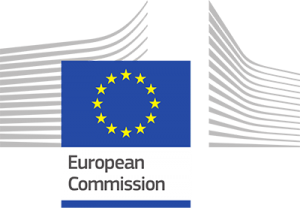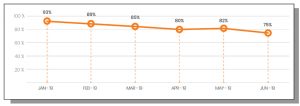
In 2018, 28 online advertising companies and advertising industry associations signed a Memorandum of Understanding (MoU) facilitated by the European Commission, committing them to minimize the placement of “advertising on websites and mobile applications that infringe copyright or disseminate counterfeit goods.” The MoU is intended to “curtail the revenues of these websites and apps. The signatories also commit to monitor the impact and effectiveness of the MoU on the online advertising market.
Two years later, the European Commission has released two reports detailing progress facilitated by the MoU.
Methodology
The first of the two reports, Impact of the memorandum of understanding… (linked below), summarizes work by White Bullet Solutions Ltd., which collected data from 7,627 Web sites in 19 EU countries, using the US as a control country; for the first half of 2019, and then compared it with its own independent dataset of 530 Web sites in 8 EU countries measured during 2018, to assess changes between 2018 and 2019.
Types of illegal sites evaluated
The study classified Web sites as “Illegal” (targets of law enforcement, judicial and other authorities) and “High Risk” (sites not yet targeted but suspect). 59% of the sites were linking sites, followed by download (hosting) sites, at 16%. 72% of their content was found to be video. Half of the sites studied engaged in activities to evade blocking, or changed their domains during the monitoring period.
The MoU has generally been effective
During the first six months of 2019, the proportion of ads collected from Major Brands that came from EU Major Brands fell from 93% to 75%, which demonstrates that awareness of infringing ads, combined with proactive efforts to limit their availbility on illegal or suspect Web sites has been effective.

Illegal Web sites recorded 60% of branded ads. Major brands represented 4% of ads in the studied countries, compared with 3% in the US. Gambling sites captured 52% of branded advertising, followed by arts and entertainment sites (20%).
Although 12% fewer ads were collected per visit during the period evaluated after the introduction of the MoU, the percentage of Branded Advertising Post-MoU increased from 38% Pre-MoU to 52% Post-MoU. The largest increases came from the UK, the Netherlands, Germany and Italy.
Advertising served by intermediaries was less than 16% across all territories studied, indicating a relatively high level of compliance for EU Ad Intermediaries.
Rating the MoU itself
The second of the two reports detailed the functioning and the effectiveness of the MoU itself. Most of the signatories considered that the MoU works well in reducing the placement of advertising on, and therefore the financing of, IPR-infringing websites and mobile applications.
Read the studies
Read the Study on The impact of the memorandum of understanding on online advertising and intellectual property rights on the online advertising market, released August 12, 2020
Read the EC Report on the Functioning of the Memorandum of Understanding on online advertising and intellectual property rights, released August 14, 2020
Read the EC’s initial 2018 MoU
Why it matters
To gauge the effectiveness of any program, there must be metrics for success. These reports compare actual results against initial metrics, which will help the signatories justify the continuation of these initiatives and their funding. They also provide the signatories with benchmarks that the can use to further rationalize their own activities.












